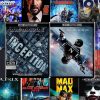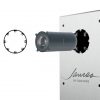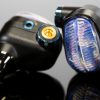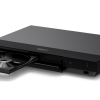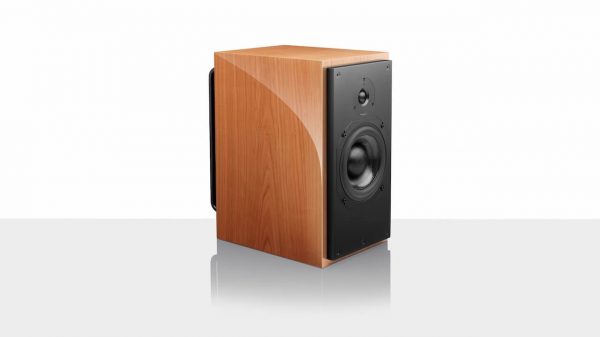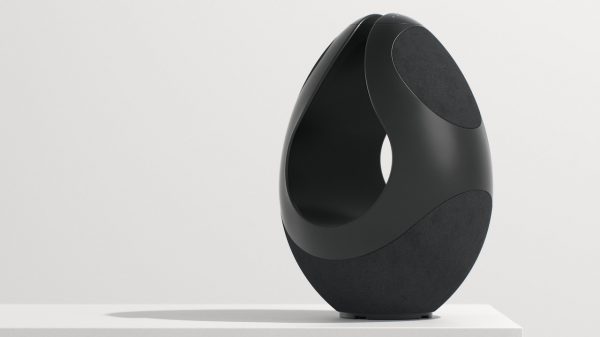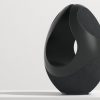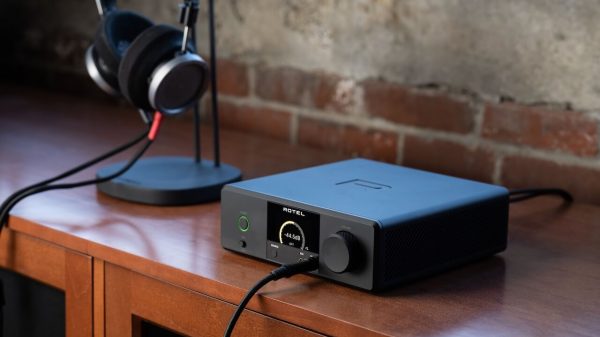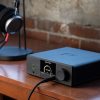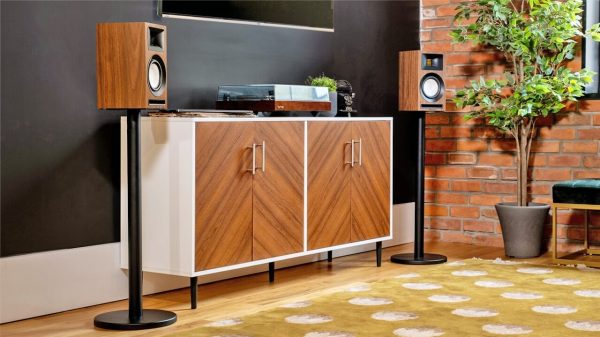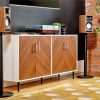JBL is a brand in transition and one with a very clear vision for the future. We recently sat down to discuss that path forward with Jim Garrett, Senior Director, Strategy & Planning, Harman Luxury Group. Audiophiles who think they know what JBL stands for in 2023 might find our podcast rather surprising. Products like the new JBL 4329P Powered Loudspeakers are a recognition that although listening habits have changed rather dramatically — the interest in sound quality is the most important feature for customers in this range.
JBL is one the oldest brands in audio reproduction. The company which bears the initials of James B. Lansing, was an innovator in early cinema sound systems when the company was formed in 1946. By the 1960s, JBL were the speakers of choice in recording studios and rock concerts, most notably at Woodstock in 1969 and the Grateful Dead’s monstrous “Wall of Sound”.
Harman International’s acquisition of JBL in 1969 helped expand the brand’s growth into the consumer business with the release of the JBL L100; a consumer version of the studio monitor that professionals liked so much, they wanted to take it home to use in their own hi-fi systems. Its unique waffle grille set it apart from the competition, and its use in Maxell’s “Blown Away” tape commercial cemented its iconic appeal.
Tip: The JBL L100 was relaunched in 2018 as the L100 Classic; a limited edition L100 Classic 75 was released in 2020 in celebration of the brand’s 75th Anniversary.
Today JBL continues to produce award-winning products for movie theaters, live venues, recording studios, and automobiles, along with a range of consumer audio products from low-cost headphones and bluetooth speakers to high-end hi-fi and home theater systems.
Over the past decade, the opportunity has presented itself to experience products like the JBL DD55000 Everest and 250Ti; the dynamic capabilities of the Everest were unlike any other loudspeaker I have experienced, but at $50,000 — completely out of reach.
The JBL 250Ti were also very impressive and more room-friendly; you can certainly find a pair for around $3,500 USD if you are willing to look around.
Vintage JBL fans were overjoyed when Harman reintroduced the L100 Century loudspeakers but we are not sure that represents the best option; the JBL 120Ti (if you can find them) used the best tweeter JBL ever offered (044Ti) and the other drivers utilized in the 120Ti made them a rather compelling and energetic listen.
They represent the classic JBL 3-way design with superior industrial design and sonics compared to a number of the “vintage” loudspeakers that are currently all the rage; they can be found for less than $1,000 used and I still have a pair in my collection that get used in my den on a regular basis.
JBL 4329P

Before my well-documented hearing issue (making a steady recovery) took me out of the box for over 2 months, I was already in the process of reviewing the JBL 4329P and I apologize for taking longer than usual to get this review done.
The 4329P joins a growing list of active audiophile loudspeakers that are designed to be paired via Wi-Fi or Bluetooth to digital source components; Klipsch jumped into the shallow end with “The Nines,” whilst PSB’s Alpha iQ and JBL’s 4305P waded slightly deeper for more money.
Other brands like DALI and Dynaudio took the plunge in the deepest part of the pool with the Rubicon C and Focus 50 models.
The JBL 4329P falls somewhere in the middle between the two camps and that makes it more appealing in our opinion.
One of the most appealing aspects of this type of loudspeaker is the simplicity of the setup; although one can royally screw that up if you have multiple sources and end up with multiple sets of cables connected to the rear panel of the primary loudspeaker.
JBL has not gone the path that is favored by KEF; one can order the excellent LSX II or LS50 II wireless speakers in a rather wide range of finishes. Walnut and Black veneers, along with a recently introduced matte White finish are your choices here and whilst that might be less than inspiring for some, the walnut finish looks extremely good.

If you have a pair of 20″ to 24″ stands with a large top plate, the 4329P will work rather well in that scenario; keep in mind that they weigh roughly 35 pounds apiece and require a sturdy foundation.
The 4329P are 20″H x 13″W x 13″D and unlikely to work on a bookshelf; a stand or credenza make the most sense from a safety perspective.
The 4329P has high-resolution Bluetooth via aptX Adaptive which supports audio resolutions up to 24-bit/96kHz. While Apple products do not currently support aptX Adaptive, Android users will be able to take advantage of this and will get excellent sound via the Bluetooth connection. Apple users will still get via high-quality sound via Bluetooth, just at lower resolutions.
The 4329P do share a passing resemblance to the smaller JBL 4305P; a large horn-loaded tweeter occupies the top portion of the front panel, whilst the 8-inch woofer handles the lowest frequencies.

The primary speaker features a wide range of inputs/outputs and controls; the secondary speaker only offers a power connection and RJ45 jack which you can connect to the primary speaker with the supplied cable; use of the digital link cable is not required.
The speakers will connect wirelessly and support resolutions up to 24-bit/96kHz. Using the Digital Link cable will increase bandwidth to 24-bit/192kHz as well as provide a reliable connection between the speakers if users find themselves in situations where there is a high level of Wi-Fi interference.
The rear panel offers balanced 3-pin XLR/1/4-inch jacks, RJ45 Ethernet, USB Type-B, Toslink, 3.5mm, and USB Type-A (for service updates only) inputs.

Outputs are limited to the aforementioned Ethernet connection and a RCA subwoofer output.
Controls are only offered on the primary loudspeaker; users can select L/R for the primary which will help users who may not have easy access to the controls on one side of their listening room. Both loudspeakers need to be connected to AC power. JBL has included a service update switch, reset button, bass contour (0 or -3dB) and an input sensitivity switch for the balanced inputs (+4 or -10dB).

The front panel features a volume control, pairing button, and source selection button.
For those who would prefer to use a remote, JBL supplies a wireless option that worked well, but I must say that we were not overly impressed with the plastic design; the loudspeakers are built to a very high-level and the remote does not feel like something that should come with loudspeakers at this price range.

There is a new app called “JBL Premium Audio” that will be available on the Google Play and Apple app stores within the coming weeks.
JBL has included a 10′ shielded CAT6 cable in the box which should be enough for most rooms but one can easily find a longer cable online if necessary.
Technology
The 4329P is a 2-way design that utilizes the JW200P-4 8-inch paper cone woofer with a cast frame and JBL’s 2409H horn-loaded 1-inch compression driver tweeter. The 2409H arrived in 2014 and has been a mainstay in JBL’s higher-end speakers ever since so it is not a surprise to see it used here.
There is no internal DAC inside the loudspeakers; It is a completely digital signal path from input to the class D amplifier. (The analog inputs do of course use an A to D converter.)
Secondly, the primary and secondary speakers connect wirelessly between themselves via a low-latency WiSA Wi-Fi radio. When used in this manner, the maximum system resolution is 24-bit/96kHz, which is the limitation of WiSA in this scenario. When the speakers are tethered/connected with the included Digital Link Ethernet cable, maximum system resolution increases to 24-bit/192kHz.
It is up to the user to decide if they prefer the convenience of the wireless connection or if they prefer maximum playback resolution when 24-bit/192kHz content is available from a source and an input that can support it.
That being said, the various wired and wireless inputs can support various maximum resolutions.
The Ethernet jack and the USB-B connections support up to 24-bit/192kHz, the optical connection supports up to 24-bit/96khz, Chromecast via wireless supports up to 24-bit/96kHz, Airplay 2 via wireless supports up to 24-bit/48kHz, and the Bluetooth supports up to 24-bit/96kHz when an aptX enabled transmission device is used.

The class D amplification provides 250 watts/channel for each woofer and 50 watts/channel for the compression driver; the position of the amplifiers can easily be identified by the protruding heatsinks on the rear panels and we would be remiss if we didn’t warn users that they can become rather warm during use.
Be careful in regard to adjusting the rear connections after a prolonged listening session.
JBL does not offer its own streaming platform and you are free to use whatever you wish with the 4329P; the speakers support Apple AirPlay 2, Chromecast, Bluetooth 5.3 aptX Adaptive, and a wired Ethernet connection.
The one exception is Roon. A quick search on the JBL website revealed that the 4329P are listed as Roon-Ready. However, that does not mean Roon-Certified and I received the “not yet certified” message when I tried to connect using my Roon account.
I did notice on the Roon website that the 4305P is now listed as certified so I suspect the 4329P is likely working its way through certification, but do know it hasn’t arrived there yet. So for testing I used Chromecast via Roon since that does work until the certification comes through.

Sound
Having previously listened to the JBL 4305P Loudspeakers, I had expectations going in that the larger 4329P would offer a very similar experience but on a larger scale with greater low end impact. My overall experience proved that some aspects of its performance are similar to the smaller model — other aspects were totally different.
Almost immediately, we noticed that there was too much emphasis in the bass; bass-heavy tracks sounded almost too thick and with added impact. There wasn’t any sense of bloat, but it overloaded my room very quickly.
When I flipped the bass contour switch, there was a noticeable tightening up and improvement in clarity; the -3dB setting was faster, more detailed, and closer to neutral.
The mid bass also improved; there was greater definition, detail, and far more texture. The trade-off was that there was a reduction in sub bass impact, but I never retuned to the stock setting unless I wanted greater impact while watching a movie.
The transition from the upper bass into the lower midrange was very clean with no bleed and that benefitted male vocals with accurate sounding timbre and enough note weight to sound very natural.
There is a crossover in the upper midrange to the horn-loaded tweeter and what impressed us the most was the difficulty pinpointing exactly where that was; JBL has clearly done its homework in regard to the crossover and one can hear it listening to strings and piano selections. Piano notes had accurate timbre and a refinement that made it very easy to listen. At the same time, guitar notes maintained a rather sharp edge without losing any of the detail present.
Female vocals cut through the instrumentation but not in a way that obscured the rest of the music. From a tonal perspective, most tracks came across with enough weight and detail to sound very natural, and I never found that the horn-loaded tweeter and woofer were interfering with the other. Smooth, detailed, and a rather seamless transition from the upper midrange into the lower treble.

The horn-loaded tweeter delivered very linear sounding treble performance with excellent extension and clarity. Percussion had very good snap and cymbals came across with excellent tonal accuracy and airiness.
The most impressive aspects of the 4329P were how it handle dynamic shifts and the overall cohesiveness of the sound regardless of the volume levels; the JBL can transition from extremely refined in the quieter passages to transparent, detailed, and authoritative while listening to heavy metal and large scale symphonic works.
It is one of the rare stand-mounted loudspeakers that does not get tripped up by complex pieces of music or sound strained doing so at rather loud volume levels.
The soundstage performance is what I expected from a horn-loaded design that is very directional in the manner that it presents music; the JBL pushes everything forward into the room and there is not an emphasis on soundstage width. The flip side is that the 4329P are excellent at reproducing depth and extremely accurate in regard to reproducing what is on the recording.

Conclusion
The JBL 4329P are the flagship model in the powered monitor series and there is no question that they deliver excellent build quality, flexibility, and sonic performance.
Do you need a subwoofer with these loudspeakers? It was my experience in our 20′ x 16′ x 9′ listening space that they can deliver excellent bass performance (perhaps too much) without one and that they offer excellent headroom and dynamic capabilities that were extremely impressive with demanding source material.
The 4329P are detailed, cohesive, transparent, and tonally accurate across most of the frequency spectrum; timbre, texture, and timing are all strong aspects of their performance.
JBL has delivered one of the best new audiophile active loudspeakers available and they are very worthy of an audition.
Where to buy: $4,500/pair at Crutchfield
Related reading:


